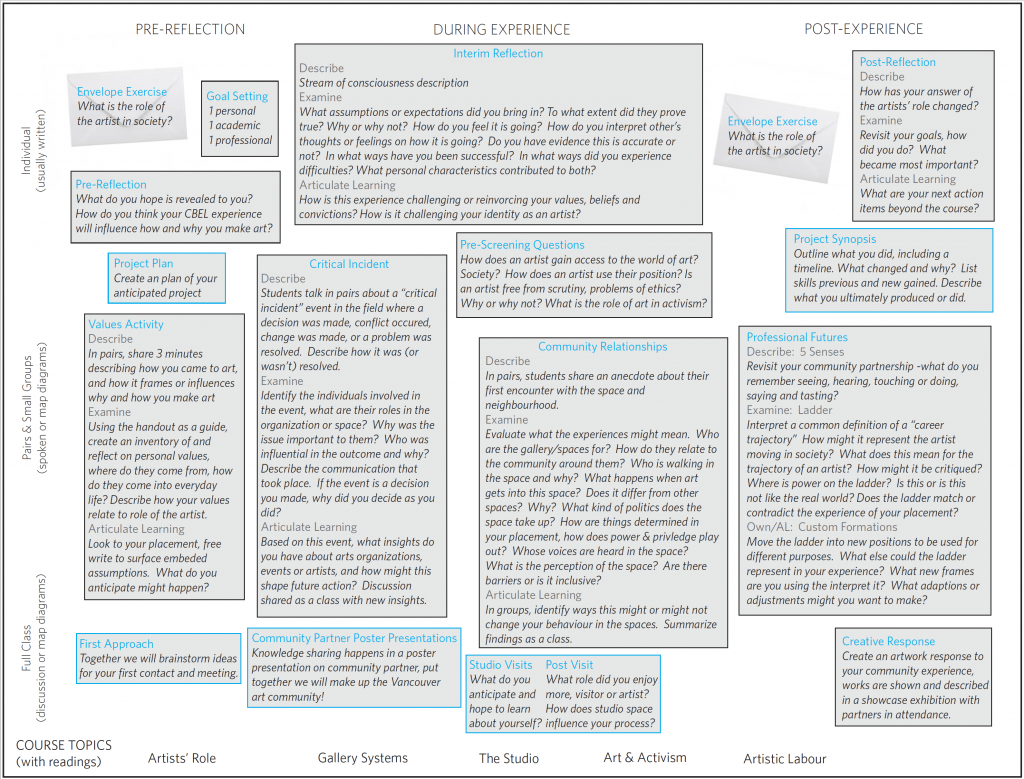By connecting with the community, I use academic critical study to weave education with civic responsibility and social action. Altruistic topics become form as my students encounter and apply their learning in a context where something is ‘at stake’ in the community by “immersing learners in an experience … to develop new skills, new attitudes, or new ways of thinking” (Lewis and Williams 6). The experiences lead students to approach relevant subjects in their work by further examining their beliefs, perspectives and assumptions about a community. The course involves considerable networking and liaising with the Vancouver art community to recruit and maintain partnerships, as well as managerial administration of all players involved in the class. I also must customize my curriculum and teaching strategies, so that our classwork aligns with the specific student partnership projects.
Course Reflection Map
In Where’s the Learning in Service-Learning, Janet Eyler and Dwight Giles show that, when instructors guide students to reflect and make connections between experiential and classroom learning, students become more likely to recognize lessons in their service experience that they might not otherwise acknowledge. With these best practices in mind, my teaching extends beyond knowledge acquisition and I instead activate learning as meaning-making, which implicates my teaching role to become a facilitator of exploration (Bruner 43). Guided reflection and self-assessment are core components of my experiential learning courses, and I ask my students strive to represent how they come to identify, process and transcend meaning in our course material and in their partnership experiences. Significantly, the literature on experiential learning shows that reflective activities that involve peer collaboration are “more consistent predictor[s] of learning outcomes than was writing in a journal or discussing one’s experience with a professor” (Vogelgesang 239). Self-assessment of my own teaching practice is indicating the same, and so I offer multiple group work activities in the class. Adapted from Eyler, Giles and Schmiede’s “4 Cs of Reflection” (36) the strategies I use for reflection during the class are: continuous throughout the course; connect course content and the community experience explicitly; challenge students to confront their own assumptions and pursue hard questions; and, contextualize content and experiences at the scale and scope of the year level and time frame of the course. Inspired by these recommendations, I developed a reflection map for the term, which I activated throughout the course. The map includes pre-reflection, reflection during the experience, and post-reflection activities—some are written privately, others are group discussions, still others take the form of a creative response in a grand finale showcase. These reflective strategies support students as they process, analyze, and develop because of their learning and make links between their personal, professional and academic development. The following is an explanation of a guided, structured reflective strategy in action.
